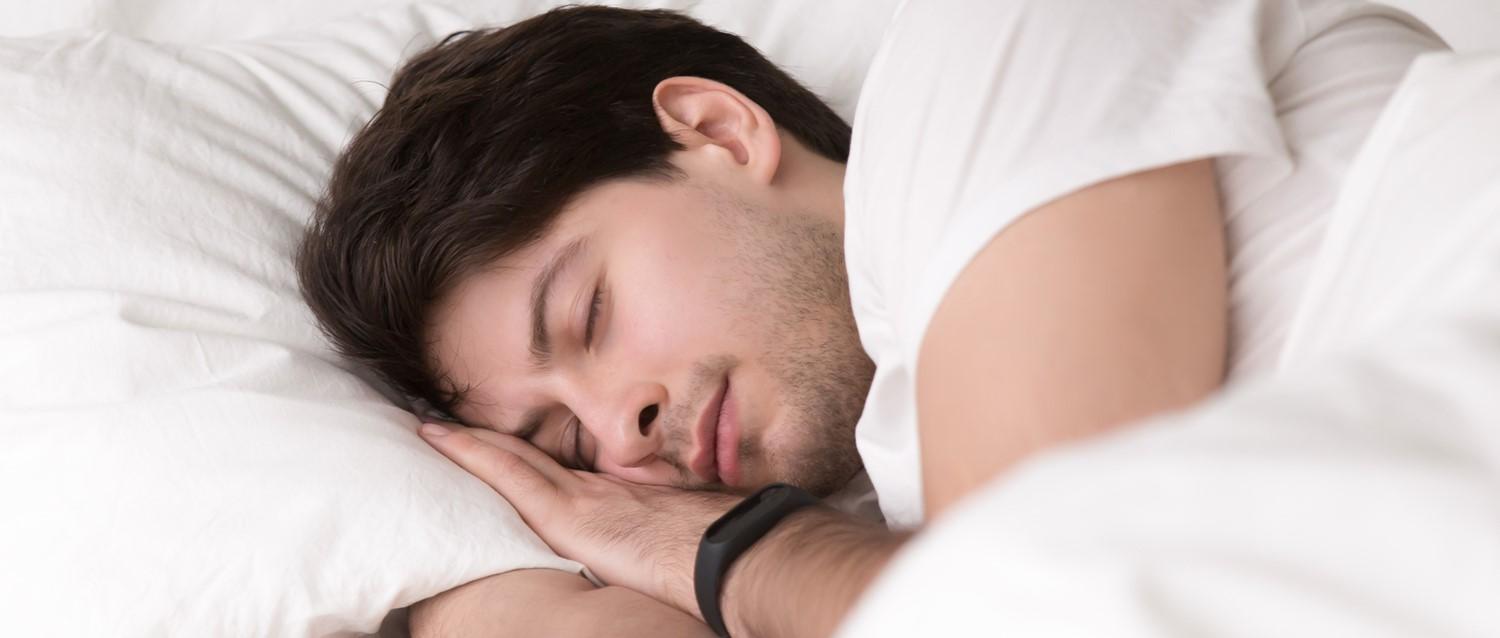
How to fall asleep fast: 5 simple methods for speedy sleep
Peer reviewed by Dr Krishna Vakharia, MRCGPAuthored by Victoria RawOriginally published 1 Jul 2024
Meets Patient’s editorial guidelines
- DownloadDownload
- Share
- Language
- Discussion
If you're struggling to sleep, you're not alone. Here are some popular methods to help you unwind and snooze off faster.
In this article:
Continue reading below
How does sleep improve our health?
Sleep is as important for your health as eating a nutritious diet and getting regular exercise. A healthy amount of sleep boosts memory and metabolism, combats fatigue, clears harmful toxins, and helps your brain recharge1.
Most adults need 7-9 hours of sleep a night to function at their best. Children and teenagers need more than adults, with new-born babies needing the most - anywhere from 8-16 hours.
Some people naturally fall asleep quickly, while others struggle. Some causes of disrupted sleep include:
Anxiety.
Lifestyle choices.
Work demands.
Medical conditions.
Overuse of electronic devices.
How can I get to sleep quicker?
A range of methods have gained popularity in recent years to help you fall asleep.
Carlie Gasia, certified sleep science coach, says: "The success rates of these techniques can vary widely as sleep is personal. What works best for you may not work best for everyone, so it is important to try out different techniques to determine what benefits your sleep the most."
1. Guided Imagery
Guided imagery is where you visualise calming scenes like a flowery field or a sunny beach. You can also focus on sound to create a peaceful inner space in your mind.
Breathe - close your eyes and take a few slow deep breaths - inhale deeply and exhale completely.
Imagine - think of a relaxing scene or use sound to picture somewhere calm.
Relax - experience the sights, sounds, and scents of your imagined scene. If your thoughts wander to worries, refocus on your peaceful place.
2. 4-7-8 breathing
The 4-7-8 technique is a simplified version of pranayama - an ancient yogi practice centred on breathing exercises.
Settle - lie somewhere comfy and touch the roof of your mouth with the tip of your tongue.
Breathe out - exhale completely with a whoosh of breath.
Breathe in - with your lips closed, inhale through your nose as you count to 4.
Hold - hold your breath for 7 seconds.
Breathe out - exhale on a count of 8 with another big whoosh.
Repeat - complete this cycle at least 3 more times.
3. Progressive muscle relaxation technique (PMR)
The PMR technique involves tensing your muscles - one at a time - then slowly relaxing them. You can pair it with the 4-7-8 method by practicing your breathing first to release any extra tension. Each step focusses on one muscle group at a time.
Tense - tense your toe muscles by curling your toes downwards and holding for 5 seconds.
Relax - relax these muscles and pause for 10-20 seconds, feeling the tension leave your toes.
Repeat - move upwards through the rest of your body - focussing on a different muscle group each stage. For example, calves, thighs, buttocks, tummy, chest, shoulders and face.
Feel - let the tension ease from each section of your body and allow yourself to drift off into restful sleep.
4. Military sleep method
The military method was created by American Olympic coach Lloyd Bud Winter. He developed a relaxation technique to help US Navy pilots fall asleep fast in noisy or stressful environments. It's designed to help you drift off within 120 seconds and combines elements of the above techniques.
Relax - progressively relax all the different muscles in your body - starting with your face and working your way down to your shoulders, arms, hands, legs and feet.
Breathe - take slow, deep breaths to lower your heart rate and relax your body.
Imagine - clear your mind by picturing a relaxing scene or repeating a calming phrase.
5. Mindfulness meditation
Mindfulness meditation helps you stay present, detach from negativity, and calm overactive thoughts.
Rest - settle yourself for sleep.
Focus - close your eyes and concentrate purely on your senses.
Breathe - breathe slowly in and out, paying attention to your body's movements as you take these breaths.
Return - if your thoughts drift, acknowledge them, then refocus on your breathing.
Continue reading below
What is sleep restriction therapy?
Gasia says: "For anxiety-related sleeplessness, mindfulness meditation or guided imagery can be effective. For those struggling with physical tension or pain, PMR can be helpful. Sleep restriction therapy can help those struggling to fall asleep get back on track by forming better habits."
Sleep restriction therapy (SRT) limits the amount of time you spend in bed. It strengthens your association between bed and sleep. Cognitive behavioural therapy for insomnia (CBT-I) - a treatment for insomnia - is often used alongside it. Because it is a form of therapy, this technique requires guidance from a healthcare professional.
1. Track - Record your sleep symptoms for a week or two using a sleep diary. Note the times you fall asleep, wake up in the night and get up in the morning. This will show how much time you spend asleep compared to your total time in bed.
2. Restrict - Based on these patterns, your sleep therapist will adjust your current sleep schedule. This will restrict the amount of time you're allowed in bed - ensuring you're only in bed when you're likely to be asleep.
3. Resist - Go to bed and get up at the same time every day - regardless of how well you slept. Resist the urge to nap outside of your scheduled hours.
4. Increase - As you get better at staying asleep, your therapist will slowly extend your time allowed in bed each week.
Simple ways to improve sleep
Small changes to your daily sleep habits - sleep hygiene - can also help you fall asleep faster, sleep more soundly, and wake up feeling refreshed. Here are some tips to help you get a better night's rest.
Gasia explains: "A consistent sleep schedule is important for falling asleep faster and improving sleep quality. It helps maintain the body’s sleep-wake cycle - or circadian rhythm - making it easier to fall asleep and wake up naturally at the same times each day."
Stick to a regular bedtime and wake-up schedule.
Avoid daytime naps of over 30 minutes - these can disturb your sleep patterns.
Exercise regularly for better sleep - avoid intense workouts within three hours of bedtime.
Skip caffeine, alcohol, and nicotine before bed - they make it harder to fall and stay asleep.
Avoid screen time and reading in bed to help your brain associate it with sleep.
Don't go to bed hungry or too full - heavy meals disrupt sleep, and hunger pangs can keep you awake.
If sleep doesn't come, don't force it. Leave the room and do something calming - then go back to bed when you're sleepy.
Regular exposure to natural light helps regulate the sleep-wake cycle.
Create a calming bedtime ritual.
Here are some of Gaisa's recommended pre-bedtime activities to add to your sleep schedule:
Reading - but not in your bed.
Having a warm bath.
Practicing yoga or light stretches.
Listening to calming music.
Trying aromatherapy with relaxing scents.
"These activities signal to your brain that it's time to wind down."
Research shows a link between people who have poor sleep hygiene having trouble sleeping, feel sleepy during the day, and even experiencing depression2. Therefore, it's important to adopt healthier sleep habits to maintain overall health - whether through small changes in lifestyle and daily routines or by practicing simple techniques.
Continue reading below
Further reading
Patient picks for Sleep and insomnia

Healthy living
What are sleep trackers and do they work?
Sleep trackers have experienced a surge in popularity over recent years. As a nation, we seem to be extremely curious about what's happening with our bodies while we sleep. But, before you start spending money on sleep tracking devices or downloading apps, it may be helpful to understand a bit more about how and whether they work.
by Emily Jane Bashforth

Healthy living
Sleep debt calculator
Open the sleep debt calculator.
by Patient infomatics team
Continue reading below
Article history
The information on this page is peer reviewed by qualified clinicians.
Next review due: 1 Jul 2027
1 Jul 2024 | Originally published
Authored by:
Victoria RawPeer reviewed by
Dr Krishna Vakharia, MRCGP

Ask, share, connect.
Browse discussions, ask questions, and share experiences across hundreds of health topics.

Feeling unwell?
Assess your symptoms online for free